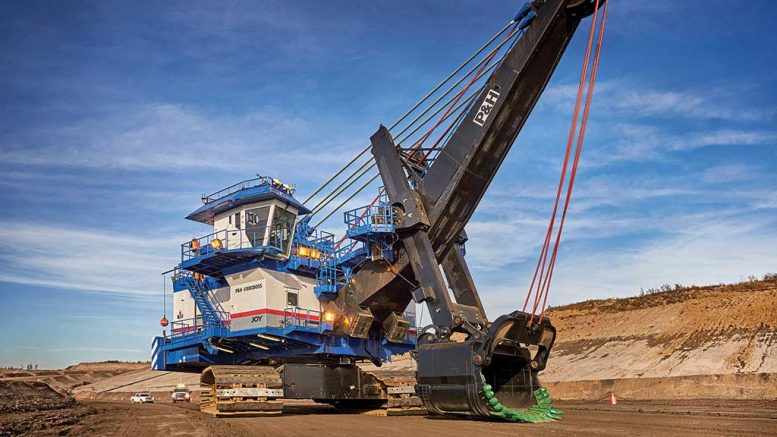Mining was one of few industries that saw relatively little disruption at the start of the global Covid-19 pandemic in March 2020. And although miners endured commodity price volatility, they enjoyed low or stable costs in the early part of the pandemic (remember the first-time-ever negative oil price of April 2020, when West Texas Intermediate went down to -US$37.63 per barrel?).
Lower input costs — as well as cost control eff orts by miners — led to record profits, share buybacks and beefed up dividends to shareholders. But inflation has returned. Last year, a combination of Covid stimulus funds, supply chain stresses, pent-up demand and a loosening of Covid restrictions pushed inflation rates in the U.S. to 7%, up from 1.3% in 2020. In January — before the Ukraine war started — U.S. inflation reached 7.5% — its highest level in 40 years. (The inflation rise has been more modest in Canada — from 0.7% in 2020 to 3.4% in 2021, but according to the World Bank, high inflation is widespread, with 15 of 34 countries classified as advanced economies experiencing 12-month inflation of above 5% last year).
And then on Feb. 24, Russia attacked Ukraine — pushing commodities prices to record highs and fanning inflation higher.
At the mine site, the costs of key inputs have risen dramatically from their 2020 pandemic lows, when Covid lockdowns caused a period of deflation. In a mid-March research report, Big Global Miners — 3 Big Issues: Growth, Future Portfolios & Costs, Bank of America highlighted a 350% rise in fuel (Brent crude); a more than 600% increase in sulphuric acid (in Chile); a 300%-plus increase in steel; and a 400%-plus increase in spot LNG in Europe from their lows two years ago to recent highs.
While central banks are finally starting to raise rates to combat inflation (the U.S. Federal Reserve raised rates in mid-March by 0.25% to 0.5% — the first rise since 2018 — and the Bank of Canada did the same in early March), they may now be forced to move more cautiously to balance the added economic and political risk and uncertainty introduced by the Ukraine war.
And if the Western world is serious about shunning Russia for its unprovoked aggression in Ukraine and its egregious violations of international norms, and continues to cut Russia out of trade and financial markets — even after some type of resolution is achieved — it will only add to inflationary pressures that miners (and everyone else) are already dealing with.
A deglobalizing world
According to analysts at MSCI, a leading provider of investment analysis tools and services, the world has been in a deglobalizing trend since 2015. The pandemic accelerated this shift, and Russia’s actions in Ukraine have served to further cement it.
There are risks that come with a less integrated world economy, Román Mendoza, senior associate, Americas Regional Index Research with MSCI wrote in a December blog post.
“Deglobalization may… mean that national markets are less vulnerable to external shocks, but this would come at the cost of increased vulnerability to domestic economic conditions. Trade flows could become more regional in nature as supply chains shorten, and, in general, cross-border trade and investment would be lower,” he wrote.
“While global supply chain disruptions [caused by the pandemic] have resulted in scarcity and higher prices, we can’t ignore that pro-globalization trends likely helped keep inflation at bay for several decades, as lower-cost producers increased supply for advanced economies. If the trend toward deglobalization continues, it could cause a supply-side shock. In addition to shortages, the lack of global competition and a long-term reduction in trade could add to inflation pressure, as well as slower innovation cycles and lower long-term GDP growth.”
In his letter to shareholders in late March, BlackRock CEO Larry Fink also highlighted the risks of a less integrated economy in light of Russia’s actions writing “…Decoupling will inevitably create challenges for companies, including higher costs and margin pressures. While companies’ and consumers’ balance sheets are strong today, giving them more of a cushion to weather these difficulties, a large-scale reorientation of supply chains will inherently be inflationary.”
Inflation isn’t all bad for miners, however, as BofA pointed out in their report, even as it notes that some miners are guiding for double-digit cost increases year-over-year.
“Perhaps counter-intuitively, we think this is a bullish thing for the space as increasing costs equal steeper cost curves and higher price expectations,” BofA analysts wrote. “Higher costs tend to steepen cost curves [which] equals higher marginal cost, in theory less willingness to supply the marginal tonne. That said, for any particular company, to the extent that the market has underestimated costs while modelling higher revenues, this could lead to disappointment on earnings day.”
Capital costs are also rising as seen in several recent examples including Argonaut Gold’s Magino gold project and Iamgold’s Côté gold project, both in Ontario, as well as Teck Resources’ QB2 copper project in Chile. BMO Capital Markets analysts noted that several miners and juniors at the BMO Global Metals & Mining conference that concluded in early March forecasted capex inflation in the range of 20-25%. For now, however, miners are still recording healthy profits thanks to high commodities prices, with WoodMac recently flagging miners’ margins as “way above historical norms.” While they have a tricky juggling act to pull o ff as they look to replenish reserves and build capacity needed for an increasingly electrified but higher-cost world, at least miners will be making their latest pivot from a position of strength.


Be the first to comment on "Mining’s latest pivot means adjusting to a higher-cost world"